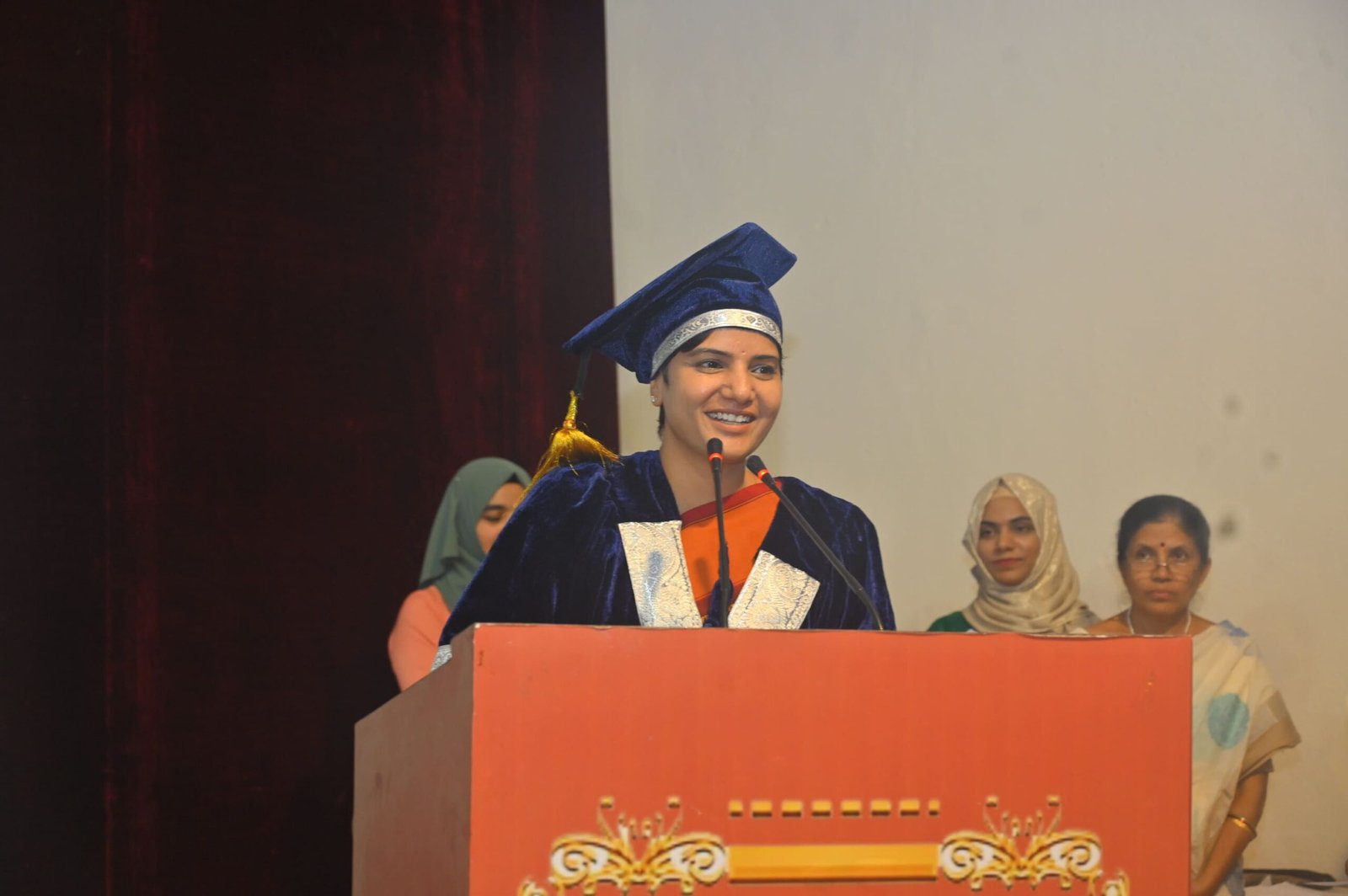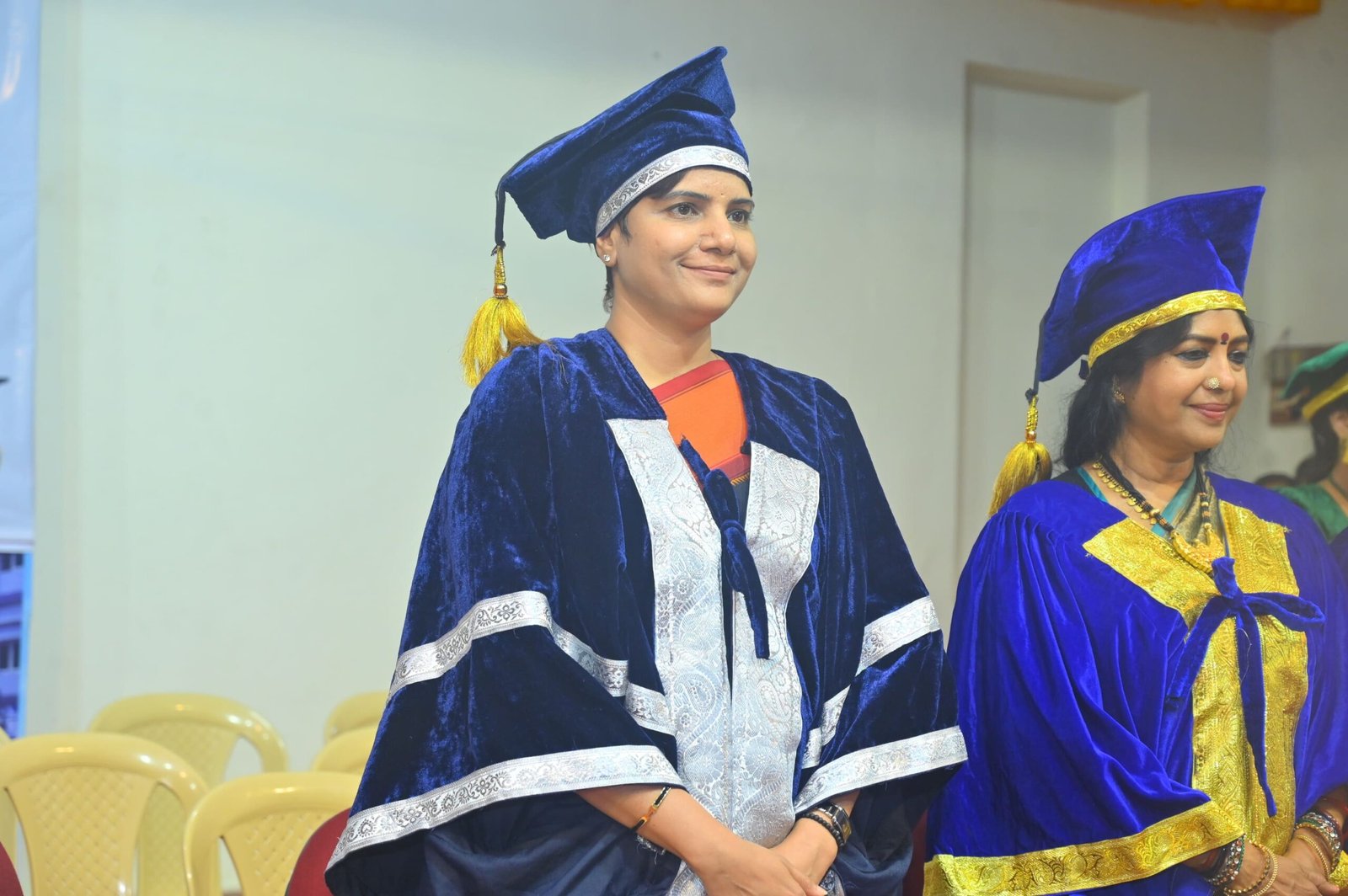
12 Things You’ll Learn During Bharat Darshan as an IAS Trainee
Bharat Darshan, or the Winter Study Tour, is integral to IAS officer training. The nationwide exposure tour introduces officer trainees to India’s administrative and cultural diversity. Designed to offer hands-on experience, it allows future administrators to understand the complexities of governance across different regions and institutions. Bharat Darshan helps officers gain practical insights into the […]
Bharat Darshan, or the Winter Study Tour, is integral to IAS officer training. The nationwide exposure tour introduces officer trainees to India’s administrative and cultural diversity.
Designed to offer hands-on experience, it allows future administrators to understand the complexities of governance across different regions and institutions.
Bharat Darshan helps officers gain practical insights into the country’s functioning through visits to key government bodies, military establishments, and grassroots organizations.
More than a journey, it is a foundational experience that shapes their perspective, strengthens their commitment to public service, and deepens their connection with the people they are destined to serve.
Immersive Understanding of India’s Diversity
One of the most enriching aspects of Bharat Darshan is the deep, immersive exposure it provides to India’s unmatched diversity. As IAS officer trainees traverse the country’s length and breadth, they witness firsthand the vast differences in geography, from the rugged terrains of the Himalayas to the serene coastal belts of the South, from the deserts of Rajasthan to the dense forests of the Northeast.
Alongside geographical variety, trainees engage with many cultures, traditions, and languages that define India’s social fabric. Each state and each district tell a different story of history, heritage, and local governance models shaped by unique socio-political realities.
Through interactions with local communities, tribal populations, civil society organizations, and state officials, trainees gain a nuanced understanding of how regional dynamics influence policy implementation. They observe how festivals, food habits, dress codes, and dialects differ, yet these differences are woven into a national identity.
This immersive journey fosters cultural sensitivity and practical awareness. It helps future administrators understand that effective governance must be inclusive, context-specific, and rooted in empathy. In this sense, Bharat Darshan is about observing diversity and learning to embrace and serve it with a well-informed, open-minded approach.
Insights into India’s Governance Systems
Bharat Darshan is a powerful learning platform for IAS officer trainees to understand the practical workings of India’s administrative and governance systems. As they visit key institutions across states and at the central level, trainees witness the real-world application of policies, schemes, and public service delivery mechanisms.
The tour includes structured interactions with District Magistrates, Police Commissioners, Municipal Commissioners, and senior officials from various departments. Trainees observe how different states manage law and order, implement welfare programs, handle disaster response, and deliver essential services like health, education, and sanitation. These firsthand experiences offer valuable lessons on administrative innovation, inter-departmental coordination, and adaptive governance models.
Visits to central institutions such as the Parliament, Supreme Court, Election Commission, and NITI Aayog further enrich their understanding of national-level policymaking, legislative processes, and institutional checks and balances. Exposure to armed forces, public sector undertakings, and technological hubs also helps them grasp the multifaceted nature of governance in India.
By bridging the gap between theory and practice, Bharat Darshan equips future administrators with a grounded perspective on public administration. It prepares them to approach governance challenges with clarity, competence, and a deep sense of responsibility.
Civil-Military Relations and Security Dynamics
An essential component of Bharat Darshan is the exposure it provides to India’s defense and internal security apparatus. Through guided visits and structured interactions with the Indian Army, Navy, Air Force, and paramilitary forces, IAS trainees gain a deeper understanding of the country’s security framework and the role of civil-military cooperation in nation-building.
Trainees visit military academies, command headquarters, border outposts, and strategic installations, where they observe firsthand the discipline, operational readiness, and protocols followed by the armed forces. These interactions shed light on the challenges faced by defense personnel, especially in conflict zones, border areas, and during disaster response.
Equally important is the focus on coordination between civil administration and military forces during crises, such as natural disasters, insurgencies, or border tensions. Through case studies and briefings, officer trainees learn how effective collaboration between civil authorities and security agencies is crucial for maintaining law and order, ensuring public safety, and upholding national integrity.
This exposure enhances their awareness of India’s security dynamics. It fosters mutual respect and understanding between civilian and military institutions, laying the foundation for seamless cooperation in their future administrative roles.
Exposure to Public Sector Undertakings (PSUs)
Bharat Darshan offers IAS trainees a rare opportunity to explore the functioning of India’s key Public Sector Undertakings (PSUs), crucial in driving economic and infrastructural development. Through visits to institutions such as the Reserve Bank of India (RBI), Securities and Exchange Board of India (SEBI), Oil and Natural Gas Corporation (ONGC), and National Thermal Power Corporation (NTPC), officer trainees gain firsthand insights into the scale, scope, and strategic importance of these organizations.
These visits are not merely observational; they are designed to help trainees understand the operational frameworks, policy alignment, financial models, and governance mechanisms that underpin each PSU. Trainees interact with senior officials, explore project sites, attend presentations, and learn how these institutions contribute to national priorities such as energy security, financial stability, infrastructure growth, and regulatory compliance.
This exposure bridges the gap between public administration and industrial governance, reinforcing how collaborative policymaking and efficient execution are essential to sustainable development. Understanding the role of PSUs is vital for future IAS officers, as they will often work closely with these institutions in regulatory, planning, or partnership capacities.
By witnessing how large-scale enterprises function within a public framework, trainees develop a broader perspective on economic governance, institutional accountability, and the role of strategic public investments in shaping India’s growth story.
Grassroots Development and Rural India
A defining aspect of Bharat Darshan is its focus on grassroots development and the realities of rural India. IAS trainees gain a ground-level perspective of how government schemes translate into real-life impact through visits to villages, rural cooperatives, self-help groups (SHGs), panchayats, and agricultural hubs.
These interactions help trainees understand the socio-economic challenges faced by rural communities, such as poverty, lack of infrastructure, low literacy levels, water scarcity, and agricultural distress. They observe how the beneficiaries implement, monitor, and receive flagship programs like MGNREGA, PM-KISAN, Swachh Bharat Abhiyan, and rural electrification schemes.
Trainees also witness the role of cooperative societies, local entrepreneurship, and farmer-producer organizations (FPOs) in promoting sustainable development and self-reliance at the village level. Through these engagements, they learn about the importance of community participation, decentralization, and inclusive planning in driving rural transformation.
This exposure is critical in shaping the officers’ approach to policymaking, ensuring that their decisions are rooted in empathy, practicality, and a deep understanding of rural India’s aspirations and limitations. It instills in them the value of bottom-up governance, where solutions are designed with and for the people.
Interactions with Non-Governmental Organizations (NGOs)
As part of Bharat Darshan, IAS trainees engage with various Non-Governmental Organizations (NGOs) working across sectors such as education, healthcare, gender empowerment, environmental sustainability, child welfare, and rural development. These interactions provide a valuable perspective on NGOs’ critical role in complementing government efforts and reaching the last mile in social welfare delivery.
Through field visits, workshops, and community outreach programs organized by NGOs, officer trainees gain firsthand knowledge of grassroots challenges and the innovative approaches used to address them. They learn how NGOs mobilize communities, build trust, promote behavioral change, and deliver targeted interventions, often with limited resources and under challenging conditions.
This exposure also highlights the importance of collaborative governance, where partnerships between the government and civil society organizations lead to more effective, inclusive, and sustainable outcomes. Trainees witness the power of public-private-community synergy in addressing complex social issues, especially in remote and underserved areas.
Understanding NGOs’ work ethics, accountability mechanisms, and ground-level strategies will better equip future administrators to leverage these partnerships for policy execution and social innovation. These interactions nurture a spirit of cooperation and mutual respect, laying the foundation for impactful and people-centric governance.
Interactions with Non-Governmental Organizations (NGOs)
An important component of Bharat Darshan is the interaction with Non-Governmental Organizations (NGOs), which play a pivotal role in India’s social development landscape. These engagements expose IAS trainees to the grassroots work being done by civil society in areas such as education, healthcare, women’s empowerment, environmental conservation, child rights, and livelihood creation.
By visiting project sites and interacting with NGO leaders and field workers, officer trainees gain a deeper understanding of how these organizations function, from community mobilization and needs assessment to program implementation and impact evaluation. These real-world insights highlight NGOs’ creativity, dedication, and problem-solving capabilities in some of the most underserved and remote areas.
The interactions also emphasize NGOs’ complementary role alongside government efforts, often as a bridge between the state and the community. Through collaborative models and people-centric approaches, NGOs help ensure that development reaches the most marginalized sections of society.
This exposure is invaluable for future administrators. It fosters a mindset of inclusive governance, where policies are not just designed from the top down but are informed by voices and innovations from the ground up. Understanding how to work with NGOs equips officers to create more responsive, adaptive, and participatory development models.
Economic and Financial Systems
Bharat Darshan also provides IAS trainees with essential exposure to India’s economic and financial institutions, allowing them to understand the backbone of the country’s macroeconomic management and fiscal governance.
Through visits to key organizations such as the Reserve Bank of India (RBI), the Securities and Exchange Board of India (SEBI), the Ministry of Finance, and other financial regulatory bodies, trainees observe how economic stability is maintained in a complex and diverse economy like India.
These interactions offer insights into monetary policy formulation, inflation control, financial regulation, public expenditure, taxation systems, and budget planning. Officers learn how fiscal decisions are made, financial markets are regulated, and government policies are aligned with economic growth and social equity.
Sessions with economists, financial analysts, and senior bureaucrats provide practical exposure to the functioning of institutions responsible for economic forecasting, resource allocation, investment strategies, and managing public debt.
This helps trainees connect theoretical concepts from their foundation course with real-world governance and policymaking.
Understanding the country’s financial architecture is crucial for future administrators, as many will be responsible for budget implementation, public finance management, and development planning at the district, state, or central level.
This segment of Bharat Darshan equips them with the knowledge and confidence to contribute meaningfully to India’s economic growth story while ensuring fiscal discipline and transparency.
Environmental and Ecological Awareness
Bharat Darshan also emphasizes the importance of environmental consciousness and sustainable development by visiting biodiversity reserves, national parks, forest conservation zones, and ecological research centers.
These experiences are designed to help IAS trainees understand the delicate balance between development and environmental preservation.
During these visits, officer trainees observe how ecosystems are managed, how endangered species are protected, and how conservation policies are implemented at the ground level.
They interact with forest officials, environmental scientists, and local communities who are actively involved in preserving India’s rich natural heritage.
The exposure provides insights into pressing issues such as climate change, deforestation, water scarcity, pollution control, human-wildlife conflict, and the need for ecologically sensitive development.
It also highlights innovative approaches to sustainability, such as community-led forest management, eco-tourism models, and renewable energy integration in remote regions.
This experience reinforces the need for environmentally responsible governance for future administrators.
It helps them understand how policy decisions can impact ecological systems and why environmental impact assessments, disaster preparedness, and sustainable resource management must be integrated into planning at every level.
In an era where climate resilience is becoming a cornerstone of governance, this segment of Bharat Darshan ensures that officers are not just administrators but also custodians of the environment.
Appreciating Cultural Heritage
Bharat Darshan also immerses IAS trainees in India’s cultural and historical richness, reinforcing their understanding of the nation’s civilizational depth and pluralistic identity.
Trainees explore the enduring legacy of India’s past through curated visits to UNESCO World Heritage Sites, ancient monuments, archaeological landmarks, museums, and cultural institutions.
From the majestic forts of Rajasthan and the temples of South India to the Mughal-era architecture in the North and tribal art traditions in the East and Northeast, each experience reveals the layers of India’s history, diversity, and creative expression. These visits are powerful reminders of how culture shapes society, identity, and governance.
Trainees also engage with historians, archaeologists, artists, and curators, gaining insights into preserving heritage, the role of institutions like the ASI (Archaeological Survey of India), and the challenges involved in balancing modernization with cultural conservation.
This exposure fosters a deep appreciation for India’s intangible heritage, including its languages, festivals, crafts, music, and performing arts, and underscores the importance of cultural sensitivity in public administration.
Understanding regional pride, cultural sentiments, and local histories helps future administrators build trust, communicate effectively, and implement policies that resonate with the communities they serve.
In essence, this segment of Bharat Darshan transforms cultural exploration into a tool for nation-building, where history informs leadership and heritage inspires inclusivity.
Crisis Management and Disaster Preparedness
In an era of increasing environmental challenges and unpredictable crises, Bharat Darshan strongly emphasizes equipping future administrators with an understanding of disaster management and emergency response systems.
IAS trainees gain critical insights into India’s preparedness and response mechanisms through visits to institutions such as the National Disaster Management Authority (NDMA), State Disaster Response Forces (SDRFs), and disaster-prone regions.
These visits offer a firsthand look at early warning systems, emergency coordination protocols, relief distribution processes, and community-level risk reduction strategies.
Trainees interact with disaster management experts, field responders, and local authorities who have handled events such as floods, earthquakes, cyclones, and industrial accidents.
By studying real-life case studies and simulations, officer trainees understand the importance of proactive planning, inter-agency coordination, rapid decision-making, and public communication in times of crisis.
They also explore how vulnerability assessments, climate resilience planning, and infrastructure audits are essential in minimizing the impact of disasters.
This tour segment instills trainees with a sense of responsibility and readiness, preparing them to lead effectively under pressure.
It also reinforces the value of community-based preparedness and inclusive recovery, where vulnerable populations are prioritized and local strengths are leveraged.
In their future roles, these experiences ensure that IAS officers are policy enforcers and capable crisis managers ready to protect lives, maintain stability, and restore normalcy with resilience and empathy.
Understanding Policy Implementation at Grassroots
One of Bharat Darshan’s core objectives is to help IAS trainees witness how national policies translate into action at the grassroots level.
Through immersive field visits, community interactions, and site inspections across districts and villages, trainees observe the impact of schemes and initiatives launched by the central and state governments.
Whether it’s healthcare through Ayushman Bharat, housing under PMAY, sanitation under Swachh Bharat Mission, or financial inclusion through Jan Dhan Yojana, trainees see how these policies are received, implemented, and monitored in real-life settings.
They gain insights into the last-mile delivery challenges, such as bureaucratic delays, lack of awareness, infrastructure gaps, and coordination issues.
These experiences highlight the critical role of frontline workers, Panchayati Raj institutions, local bureaucrats, and community leaders in bridging the gap between policy intent and outcome.
Trainees also learn how local innovations and adaptive strategies can strengthen implementation and improve citizen satisfaction.
By seeing governance in action at the grassroots, officers-in-training understand the complex interplay of policy design, administrative machinery, and community engagement.
This sharpens their practical problem-solving skills and deepens their commitment to people-centric governance, where policies are announced and experienced by every citizen.
Building Professional Networks and Camaraderie
Beyond exposure and learning, Bharat Darshan is pivotal in fostering strong professional relationships and lifelong camaraderie among IAS trainees.
As officer trainees travel together across diverse regions of India, share responsibilities, and face challenges as a team, they develop a deep sense of mutual respect, trust, and unity.
The shared experiences, whether navigating tough terrains, engaging in fieldwork, or interacting with high-level dignitaries, create lasting bonds far beyond the tour.
These interactions lay the foundation for future collaboration within the civil services, where coordinated efforts between officers posted in different parts of the country are essential for effective governance.
Additionally, Bharat Darshan allows trainees to interact with senior bureaucrats, experts, and administrators across departments and institutions.
These conversations inspire and serve as valuable mentorship moments, helping young officers shape their leadership styles and career outlook.
The friendships and professional networks built during this journey often evolve into support systems throughout their careers, promoting inter-cadre cooperation and collaborative policymaking.
In essence, Bharat Darshan strengthens the fabric of the Indian Administrative Service not just administratively but emotionally and intellectually.
Key Takeaways and Lasting Impact of Bharat Darshan
Bharat Darshan is far more than a study tour. This transformative journey shapes IAS trainees into effective, empathetic, well-rounded administrators.
Each experience, from interacting with tribal communities in remote villages to engaging with top policymakers in national institutions, contributes to a deeper understanding of India’s complex administrative, cultural, and social fabric.
Trainees return from the tour with more than just knowledge—they carry a sharpened sense of purpose, empathy-rooted leadership, and a vision rooted in inclusivity and resilience.
They witness both the strengths and struggles of the nation they are preparing to serve and this direct exposure helps bridge the gap between policy and people.
By understanding governance from multiple dimensions, such as economic, social, environmental, military, cultural, and grassroots, officers are equipped to make informed decisions that are both strategic and compassionate.
The relationships built, lessons learned, and insights gained during Bharat Darshan often become guiding principles throughout their careers in public service.
In essence, Bharat Darshan is a foundational pillar in making a civil servant, fostering administrative competence and a deep, lifelong commitment to nation-building.
It reminds every officer that governance is not merely about authority but service, connection, and impact.






